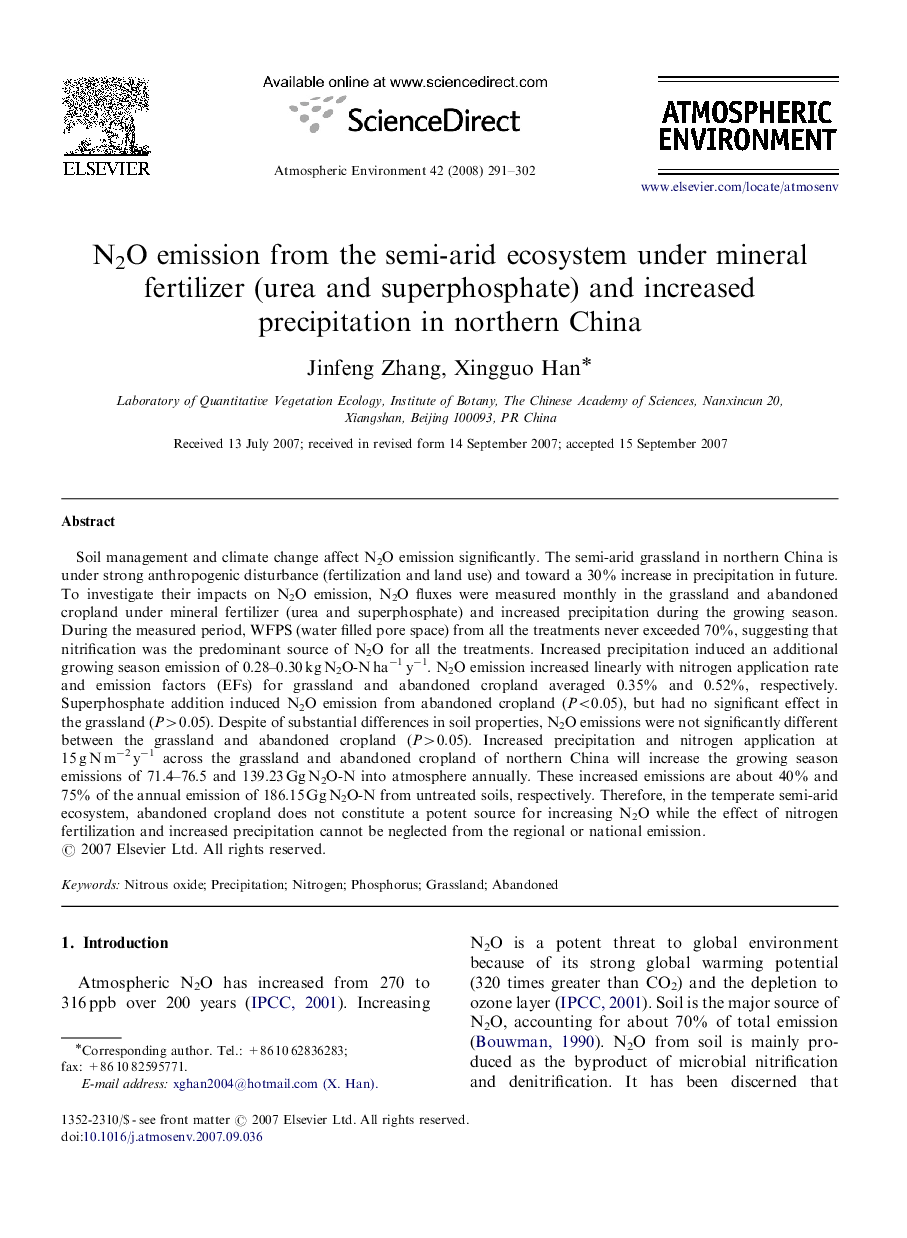| Article ID | Journal | Published Year | Pages | File Type |
|---|---|---|---|---|
| 4443256 | Atmospheric Environment | 2008 | 12 Pages |
Soil management and climate change affect N2O emission significantly. The semi-arid grassland in northern China is under strong anthropogenic disturbance (fertilization and land use) and toward a 30% increase in precipitation in future. To investigate their impacts on N2O emission, N2O fluxes were measured monthly in the grassland and abandoned cropland under mineral fertilizer (urea and superphosphate) and increased precipitation during the growing season. During the measured period, WFPS (water filled pore space) from all the treatments never exceeded 70%, suggesting that nitrification was the predominant source of N2O for all the treatments. Increased precipitation induced an additional growing season emission of 0.28–0.30 kg N2O-N ha−1 y−1. N2O emission increased linearly with nitrogen application rate and emission factors (EFs) for grassland and abandoned cropland averaged 0.35% and 0.52%, respectively. Superphosphate addition induced N2O emission from abandoned cropland (P<0.05), but had no significant effect in the grassland (P>0.05). Despite of substantial differences in soil properties, N2O emissions were not significantly different between the grassland and abandoned cropland (P>0.05). Increased precipitation and nitrogen application at 15 g N m−2 y−1 across the grassland and abandoned cropland of northern China will increase the growing season emissions of 71.4–76.5 and 139.23 Gg N2O-N into atmosphere annually. These increased emissions are about 40% and 75% of the annual emission of 186.15 Gg N2O-N from untreated soils, respectively. Therefore, in the temperate semi-arid ecosystem, abandoned cropland does not constitute a potent source for increasing N2O while the effect of nitrogen fertilization and increased precipitation cannot be neglected from the regional or national emission.
